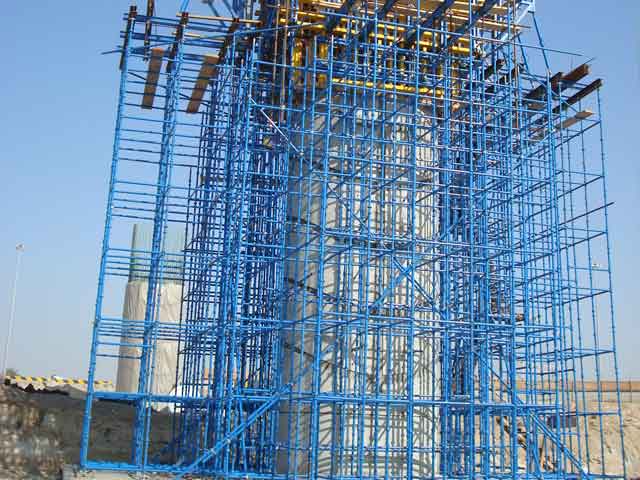
In construction and industrial projects, scaffolding is more than a temporary working platform—it is a vital safety structure that supports both workers and heavy loads of materials. Among the many factors considered when selecting a scaffold system, stability under load is often the most critical. With multiple options available, such as ringlock, kwikstage, and cuplock scaffolding, project managers and engineers must evaluate which design best balances safety, efficiency, and cost. When it comes to load-bearing stability, cuplock scaffolding consistently stands out as the most reliable system.
The Importance of Load Stability in Scaffolding
Load stability refers to the ability of a scaffolding system to remain structurally secure and resist movement or collapse when subjected to heavy vertical or horizontal loads. This stability is influenced by several factors, including:
Design geometry – The way connections are locked and braced affects rigidity.
Material quality – Steel grade, thickness, and finish determine durability and resistance to deformation.
Connection mechanisms – Secure locking points reduce play and improve overall stiffness.
Load distribution – A system’s ability to spread weight evenly prevents localized failures.
An unstable scaffolding system not only risks costly delays but also creates serious hazards for workers and equipment. Therefore, choosing a system engineered for high stability under load is essential, especially in large-scale projects such as bridges, high-rise buildings, and industrial plants.
Comparing Common Scaffolding Systems
Ringlock Scaffolding
Ringlock scaffolding is widely recognized for its versatility and modularity. Using rosettes and wedge connections, it allows for flexible angle adjustments and can be erected in complex shapes. While ringlock offers excellent adaptability, its stability under concentrated loads is more dependent on additional bracing and careful weight distribution. It performs best in projects where irregular geometries are required, but when extreme load-bearing capacity is the priority, ringlock is not always the top choice.
Kwikstage Scaffolding
Kwikstage scaffolding is popular in markets like the UK and Australia, valued for its speed of assembly. With a wedge-based connection system, it provides decent stability for general construction. However, kwikstage typically relies on more components for reinforcement and does not offer the same degree of inherent rigidity as other systems. Under very high loads, it may require supplementary measures to ensure safety.
Cuplock Scaffolding
Cuplock scaffolding, developed by SGB in the 1950s, has gained a global reputation for its unmatched stability and load-bearing strength. Its unique cup-and-blade locking mechanism creates a firm, welded-like connection at every joint. Vertical standards feature fixed lower cups and sliding upper cups, into which horizontal ledgers and transoms are inserted. Once the top cup is rotated and locked, the joint becomes extremely rigid.

This simple yet powerful connection design eliminates the need for bolts and loose fittings, significantly reducing joint movement and enhancing load stability. Cuplock scaffolding is engineered to handle very high imposed loads, making it the preferred system for projects involving heavy-duty formwork, shoring, and industrial maintenance.
Why Cuplock Scaffolding Excels in Load Stability
Rigid Connection Mechanism
The cup-and-blade locking system creates a tight, positive joint that minimizes deflection. Unlike wedge-based systems that allow slight movement, cuplock joints behave like integral nodes, greatly enhancing the structure’s stiffness.
High Load-Bearing Capacity
Due to its robust design and ability to transfer loads directly through vertical standards, cuplock scaffolding can withstand higher vertical and horizontal stresses. This makes it ideal for supporting heavy concrete formwork or large material stacks on working decks.
Uniform Load Distribution
Cuplock distributes loads evenly across standards and ledgers, reducing the risk of localized overloading. Its consistent geometry ensures predictable performance under load, which is crucial in engineering calculations.
Reduced Dependence on Bracing
While all scaffolding systems require bracing, cuplock's inherent rigidity reduces the amount needed, simplifying setup without compromising stability. This not only improves efficiency but also reduces material requirements.
Durability Under Harsh Conditions
Manufactured from high-quality galvanized steel, cuplock scaffolding resists corrosion and maintains performance even in demanding environments such as refineries, shipyards, and high-rise projects.
Practical Applications of Cuplock’s Stability
Cuplock's superior load stability makes it the go-to choice for:
High-rise building construction – Safely supporting workers and materials on tall structures.
Heavy-duty shoring – Bearing the weight of fresh concrete during slab and bridge deck casting.
Industrial maintenance – Providing secure platforms in oil refineries, power plants, and shipyards.
Large infrastructure projects – Delivering dependable support for bridges, tunnels, and transport systems.
Its reliability has made it a global standard for projects where safety and load performance cannot be compromised.
Balancing Stability with Other Considerations
While cuplock scaffolding excels in stability, procurement officers and engineers must also weigh other considerations such as cost, availability, and project-specific requirements. Cuplock systems often represent a higher initial investment compared to simpler alternatives, but the long-term safety benefits and reduced risk of structural failure outweigh the costs. Additionally, its relatively straightforward assembly—requiring fewer loose components—translates into labor savings and fewer on-site errors.
Conclusion
When evaluating which scaffolding system provides the highest level of stability under load, cuplock scaffolding emerges as the clear leader. Its rigid cup-and-blade connections, high load-bearing capacity, and proven durability set it apart from other modular systems like ringlock and kwikstage. For projects demanding absolute reliability—whether in high-rise construction, heavy-duty shoring, or industrial maintenance—cuplock scaffolding provides engineers and contractors with the confidence that their structures will remain safe and stable under even the heaviest loads.
Besides, if you have cuplock scaffolding demand, ADTO Group is your best choice, which own over 20 years experice on building industry. It was founded in 1998 and is a global one-stop provider of building materials. The group operates 12 first-level business divisions and over 260 sub-divisions, all of which are source factories. It provides comprehensive high-quality services including design, production, processing, sales, and international logistics for a full range of construction materials, decoration materials, and home furnishing materials to global clients on a sustainable basis.










